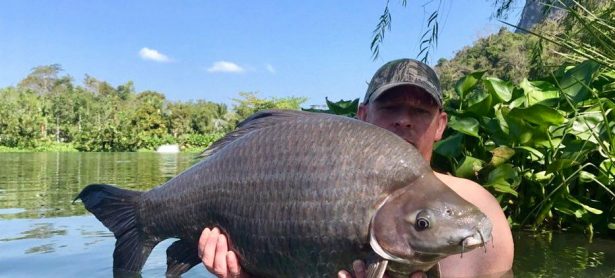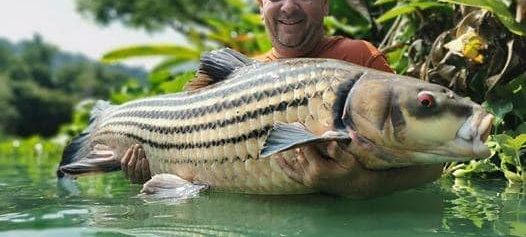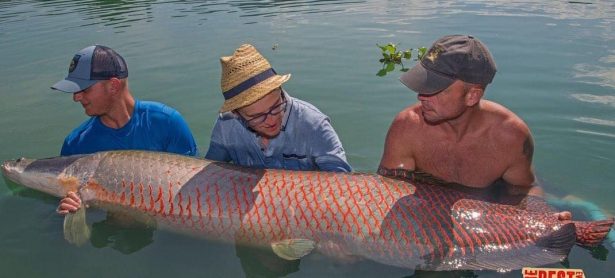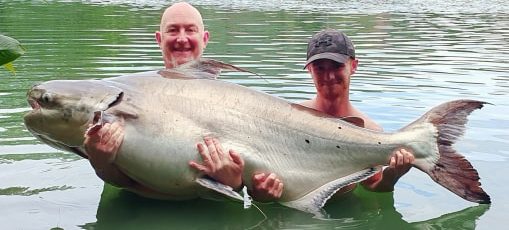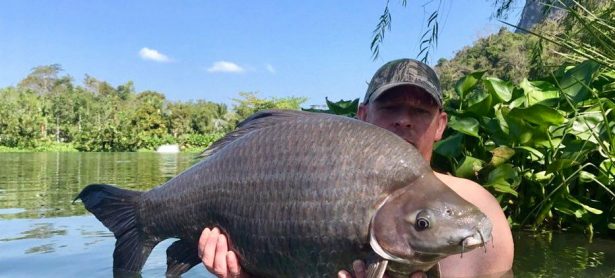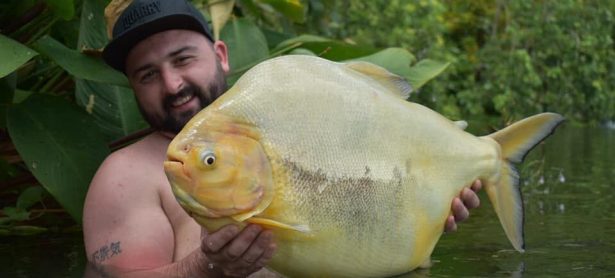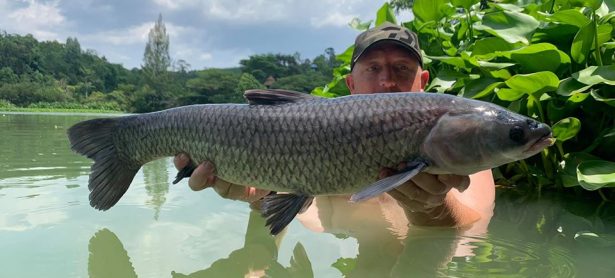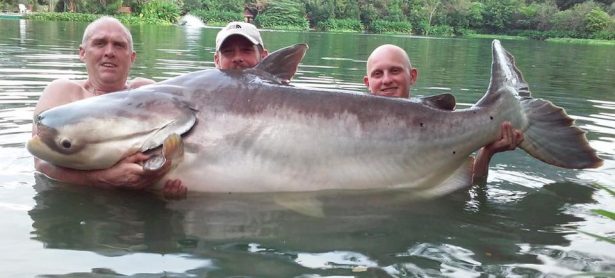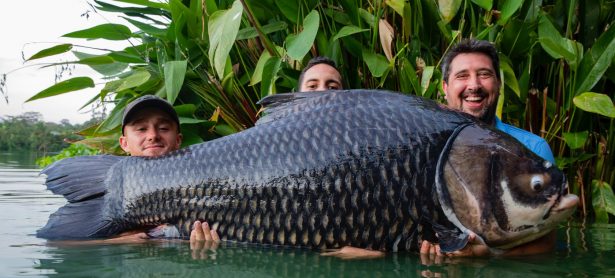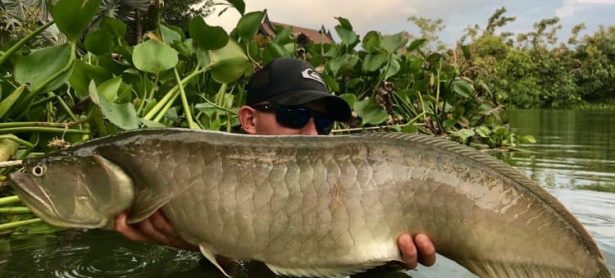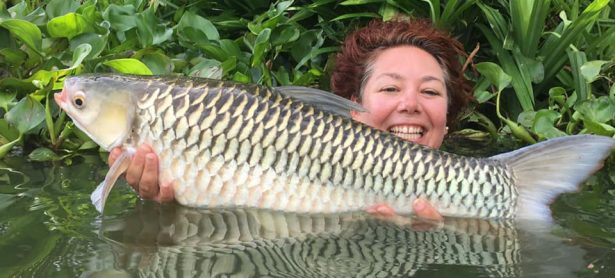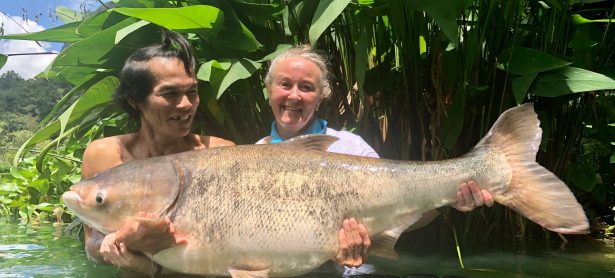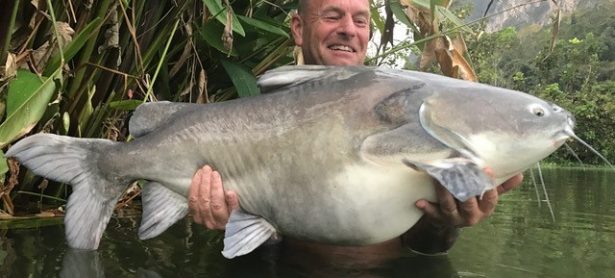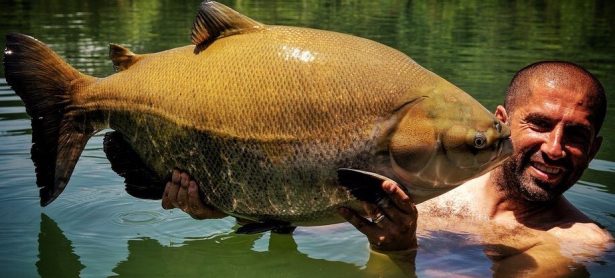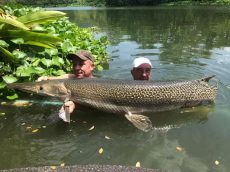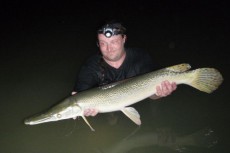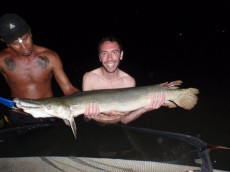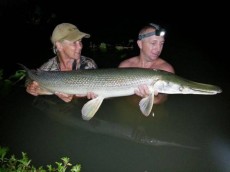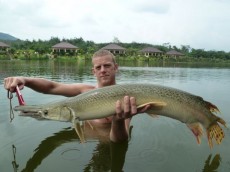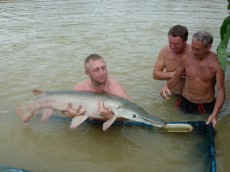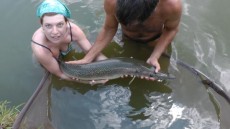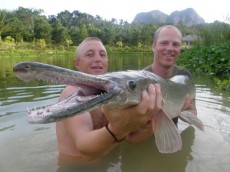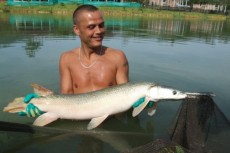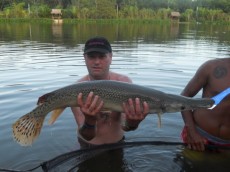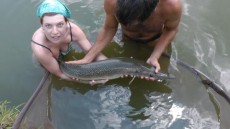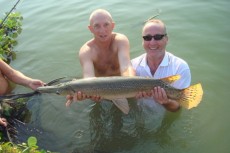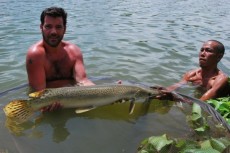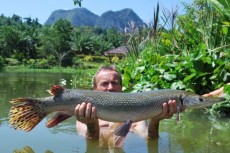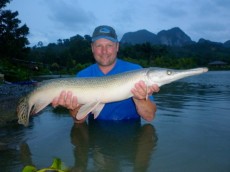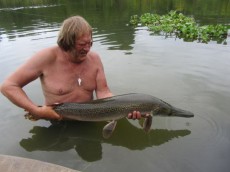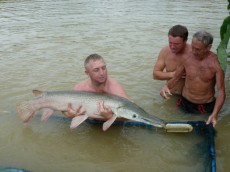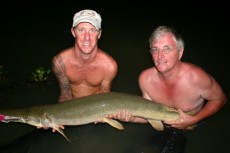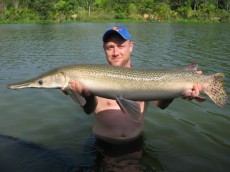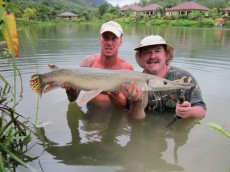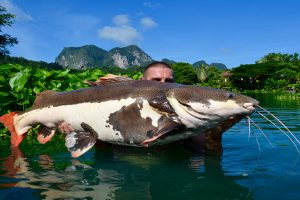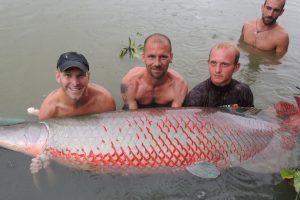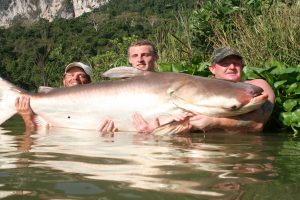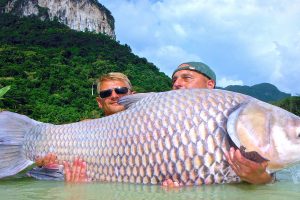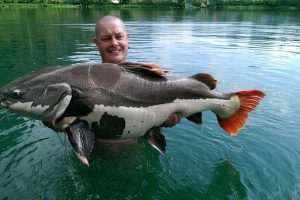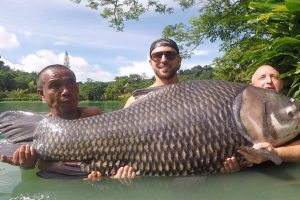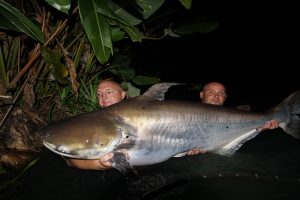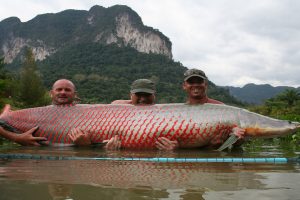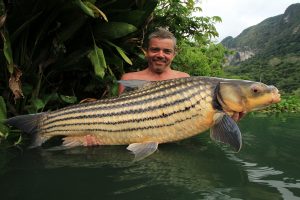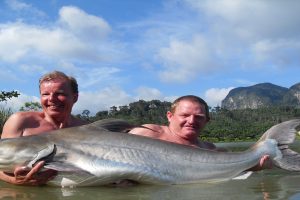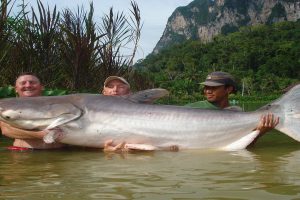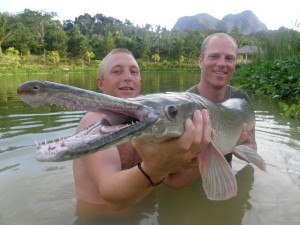 Name: Alligator gar.
Name: Alligator gar.
Species: Atractosteus spatula.
Thai name: Pla jonakay.
Biggest known fish: 80lb
Lake rod caught record: 80lb
Average weight: 25lb
Diet: Fish, waterfowl, squid, frogs.
To fish for our Alligator gar, the best methods are float fished deadbait, or alternatively they are good sport on the fly. You will also catch them on deadbaits fished on the lakebed, and this method tends to sort out the bigger fish. They feed in all areas of the lake and generally stick together, so look for them breaking the surface to gulp air, and they also like to flip over on the surface, making a very distinct splash.
Another good method to target the gar is to wait till the first hour of darkness and fish anywhere there are light reflections on the surface, as the light seems to fascinate them. A good area at this time is in front of our restaurant as the bright lights attract them. Fish a float with a night light attached, with a small sea fish deadbait suspended approximately 3ft below the surface. The alligator gar is an out-and-out fish feeder, and they prefer dead sea fish baits fished under a float during the day at approximately 5ft below the surface.
Due to their huge array of teeth with a bony jaw they are very hard to hook, and you will experience ten runs to every fish hooked and landed, which can be very frustrating at times. Again you do not need wire; braided hooklinks such as Kryston Ton-Up are perfectly adequate, matched with strong, sharp hooks around size 2/0. Once you get a take, strike instantly, as with all our fish. You will either hook these awkward fish or not, and leaving the run longer achieves nothing other than more chance of them dropping your bait. Be prepared for some spectacular jumps once hooked, and again, as with arapaima, lower your rod tip before they jump as they will shake their heads and shed the hook or cut the hooklink.
Alligator gar will often jump from the landing net so be prepared to take up the fight once more. When you wish to photograph these aggressive fish ask the guide for gloves as they are extremely slippery and lively. They do not bite you, but when they struggle their mouths open and will slash your arm or hand open in seconds. For this reason we recommend you let our guide help you by taking the head end of the fish.
General facts on the alligator gar:
Alligator gar are found in the wild in southeastern United States. They came to Thailand for the aquarium trade, and they are a simple fish to keep in captivity. The Thais will pay vast amounts of money for a platinum colored alligator gar as they are seen as a sign of wealth. This long, streamlined fish has a head that is flattened and looks much like an alligator. The tail is wide and rounded, and there are two fins on top and bottom just in front of the tail fin.
There are two more bottom fins, one about half way up the body and another just behind the head. They are similar in looks to a pike in body shape. Their teeth are sharp and protrude on either side of their bill-like mouths. The top jaw’s teeth are in a double row, and their teeth face back to stop their prey from escaping once held in their vice-like jaws. Alligator gar have a mottled brown and olive colour, which extends to their fins, giving them good camouflage to stalk their prey, and their belly is a dull cream. The alligator gar is capable of breathing air, and can survive up to two hours above water.
In the USA they are a popular fish to be hunted by bow fishers, as because of their size and air breathing ability it makes them easy to spot and target. Their scales are diamond-shaped, interlocking, and are sometimes used by Native Americans for jewelry. In the wild the alligator gar is an aggressive, solitary fish; it is carnivorous and has been rumored to have attacked humans on several occasions, although this is probably just another primitive tribal myth. Alligator gar feed by lurking amongst reeds and other underwater plant life, waiting for food to pass by.
One alligator gar was witnessed in the wild attacking a 5ft alligator before devouring it. Though subsisting mostly on fish, the alligator gar will also eat waterfowl. The alligator gar prefers slow-moving water and needs running water in order to spawn. Spawning occurs in May-Aug, when the fish deposit their eggs in shallow water. The female swims upstream laying eggs with an escort of two or more males to fertilize them. The eggs are toxic to warm blooded animals and birds. The females are much larger than the males. All these traits make the alligator gar very similar as the European pike – even the myths and legends are the same.
Alligator gar aren’t widely eaten by humans, although in Texas and Louisiana they are served in restaurants and considered a viable food source. Alligator gar grow slowly and take a long time to mature. Females mature at 11 years old and live up to 50 years. Males mature at age six and live to at least 26 years.




